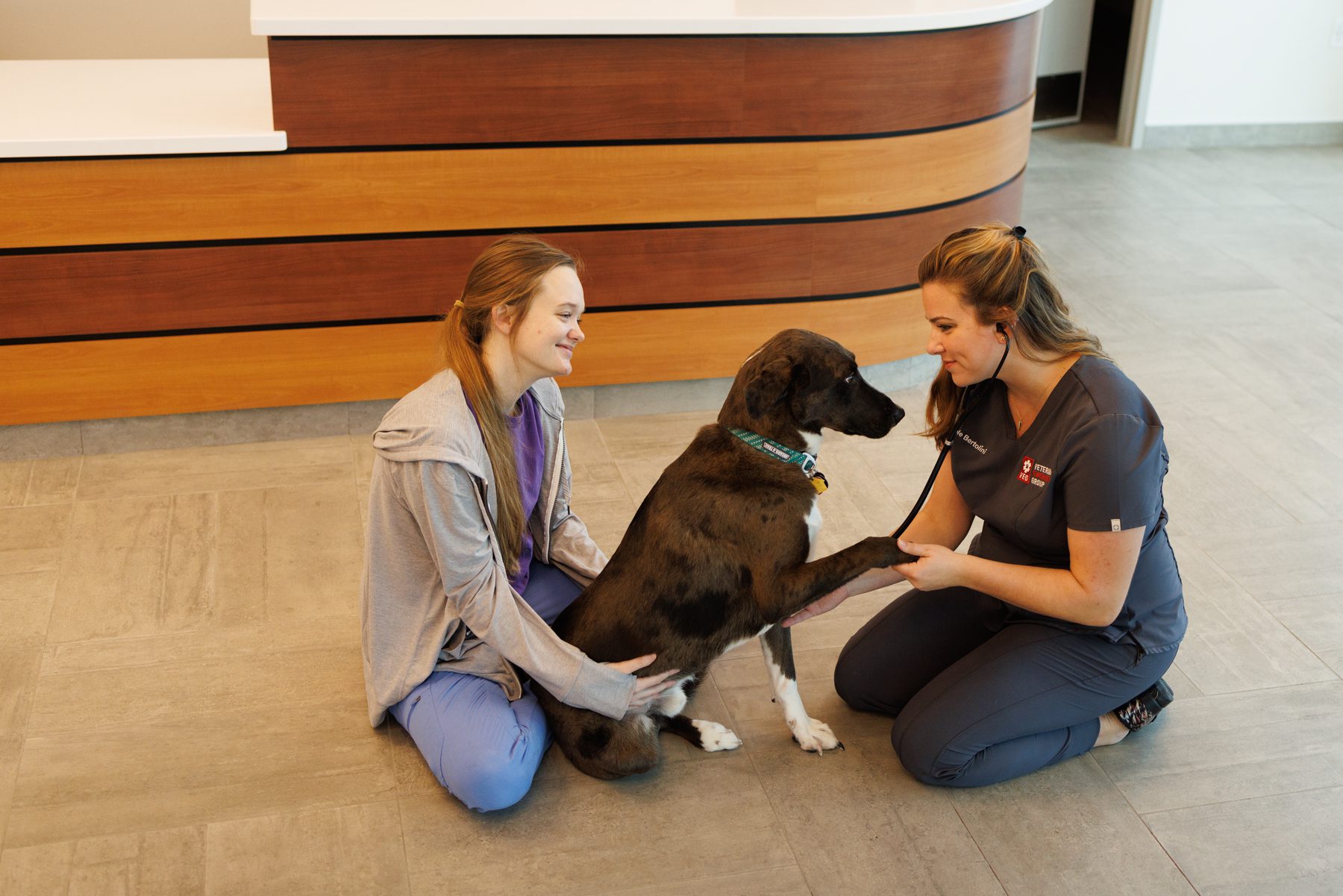
6 Signs Your Dog Was Stung By A Bee
Dr. Juan Garcia
Call & Speak with a doctor Open 24/7, Even Holidays!
Walk in today for:
Emergencies
Point-of-Care Ultrasound
Urgent Care
X-Rays
Diagnostics + Testing
End-of-Life Care
Surgery
Treatment + Hospitalization
That funky look your dog’s been sporting after a busy day outdoors may make you wonder: Was my dog stung by a bee? Which quickly leads to the question: Is a bee sting dangerous for my pup?
Whether it’s a wasp, yellowjacket or hornet–a bee sting can be concerning for your canine, as one sting can lead to anaphylaxis aka shock. Let’s dive into the signs of shock so you can identify it early and get the right treatment, right away.
6 BUZZ-WORTHY SIGNS OF A BEE STING:
1. SWELLING
If your doggo’s been stung, you’ll probably notice some swelling at the site of the sting. If so, don’t stress, this is normal. If the swelling goes down within an hour or two, and you see no other symptoms: don’t worry, bee happy!
However, if the swelling persists and symptoms worsen, contact an emergency vet, like Veterinary Emergency Group (VEG), immediately.
2. FEVER
Just like us, your pooch may run a low-grade fever after a bee sting. While this does not translate into an emergency, it could indicate that it’s a moderate-level sting and you should remain cautious.
If possible, check your dog’s temperature (or visit your vet) for an accurate reading. If it’s between 103°F and 105°F, keep monitoring. If the temp rises above 106°F, it means that it’s a serious fever, which needs to be checked out by VEG or your nearest emergency vet ASAP.
3. INCREASED HEART RATE
If your dog is having a moderate to severe reaction to a bee sting, it may result in an increased heart rate–oftentimes along with a fever.
It’s pretty normal for your dog’s heart rate to be slightly elevated, especially if the experience was traumatic for your pal. However, if it lasts, you should definitely make a trip to the emergency vet.
4. RESTLESSNESS OR LAZY
Another sign of a moderate to severe reaction to a bee sting is restlessness. You may notice your dog is panting, pacing, and is unable to get comfortable. This could be due to trouble breathing or as a result of pain and swelling in the body.
On the other hand, some dogs can become very lethargic due to high fever and elevated heart rate. If you notice your pooch is suddenly all out of play in the hours following a bee sting, it’s a sign that you need to call or see an emergency vet.
5. SWOLLEN FACE OR NECK
If you see your dog’s face, snout, or neck begin to swell after a bee sting, you should take it seriously. Get to an emergency vet right away. It means that your dog is experiencing an anaphylactic reaction which is potentially fatal.
Call your vet or VEG before heading over as they may want you to give your dog medication at home first. Do not give any over-the-counter human allergy medication (i.e., Benadryl) unless specifically directed by the vet.
6. DIFFICULTY BREATHING
Finally, difficulty breathing is the most severe symptom of anaphylaxis. You should bring your dog to the emergency vet ASAP if you notice these signs:
- Heavy movement of sides while breathing
- Extreme panting
- Drooling
- Wheezing
- Fainting
Dogs may have difficulty breathing within the first few minutes of a bee sting, if at all. However, in some rare cases, it’s possible for it to happen several hours or even a day later–so be sure to keep an eye on your pup until the bee sting starts to clear up.
GIVE VEG A BUZZ
If your dog makes it to Day 3 without symptoms, you’re probably in the clear. Continue to observe your furry pal until there’s no sign of the sting.
Questions or concerns? Call your nearest VEG location and you’ll speak with a doctor who can answer your questions. We’re here to help with any emergency 24/7, so your pup can go back to bee-ing healthy and happy!

